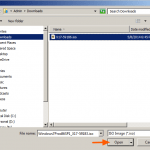Nowadays, many computer manufacturers, build their computer models (commonly laptops) without including an optical disk drive with them in order to accomplish a smaller – in dimensions – product or for cost reasons. But this becomes a problem in some cases, e.g. when you want to re-install the operating system or you want to upgrade it to another version you purchased. For such cases you have to create a bootable USB disk to accomplish that task.
This tutorial was written for all users that their computer doesn’t include an optical disk drive (or the optical disk drive is damaged) or they want to install Windows 7 from a USB. *
* Note: This guide works for creating a Windows USB bootable disk for all Windows versions (8, 7, Vista & XP). The only thing needed is to have the corresponding Windows version stored in a ISO image file.
How to create a Windows 7 USB Bootable disk.
To install Windows 7 from USB you have to put the Windows 7 ISO file into a USB disk by following the detailed instructions below:
Step 1: Download Windows 7 ISO file.
Navigate to this page and download the Windows 7 ISO image, according the version and product key you own.
Step 2. Download RUFUS USB Bootable Creator Utility.
Navigate to this page and download the RUFUS USB Bootable Creator Utility on your computer.
Step 3. Create a bootable Windows 7 USB using RUFUS USB Bootable Creator Utility.
1. Plug an empty USB disk on your computer or a USB that you don’t want the data on it (IMPORTANT: THE DATA ON THE USB WILL BE ERASED!)
2. Double-click to open “rufus” utility you downloaded at step 2.
3. Make sure that you select the correct (empty) USB disk.
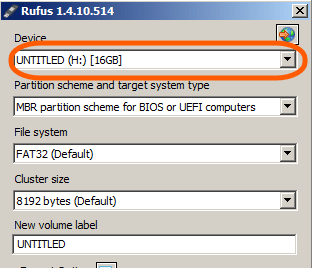
4. Click the “Click to select…” icon next to “Create a bootable disk using” option.
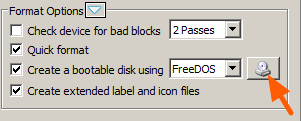
5. Choose the Windows 7 ISO image you downloaded at step 1 and click Open.
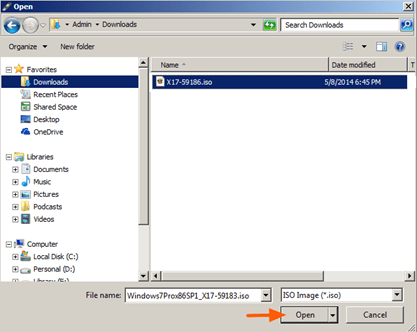
6. Finally click the Start button and wait until the Windows 7 USB boot disk is created.
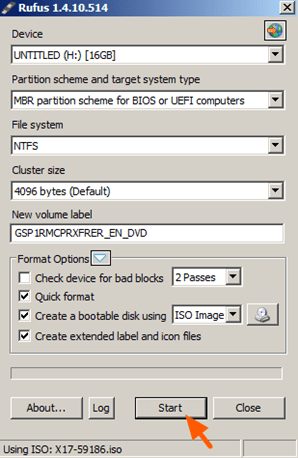
When the operation is completed, you ‘re almost ready to install Windows 7 from USB.
Step 4: Modify BIOS settings and change the boot order to USB.
The last thing that you have to do, is to enter into CMOS setup utility (at the computer where you want to install Windows) and change the boot order to USB. To do that:
1. Plug the Windows 7 Boot USB disk on an empty USB port.
2. Power On the computer & press the corresponding key to enter CMOS setup utility. (DEL or F1 or F2 or F10) *
* Note: The way to enter into BIOS (CMOS) Setup settings depends on the computer manufacturer.
3. Inside CMOS setup, change the “Boot Order”* setting to USB.
* Note: The “Boot Order” setting, is commonly found under “Advanced features” menu.
4. Save and exit from CMOS setup settings.
The Windows 7 installation is starting….
That’s all folks! Did it work for you?
Please leave a comment in the comment section below or even better: like and share this blog post in the social networks to help spread the word about this.

